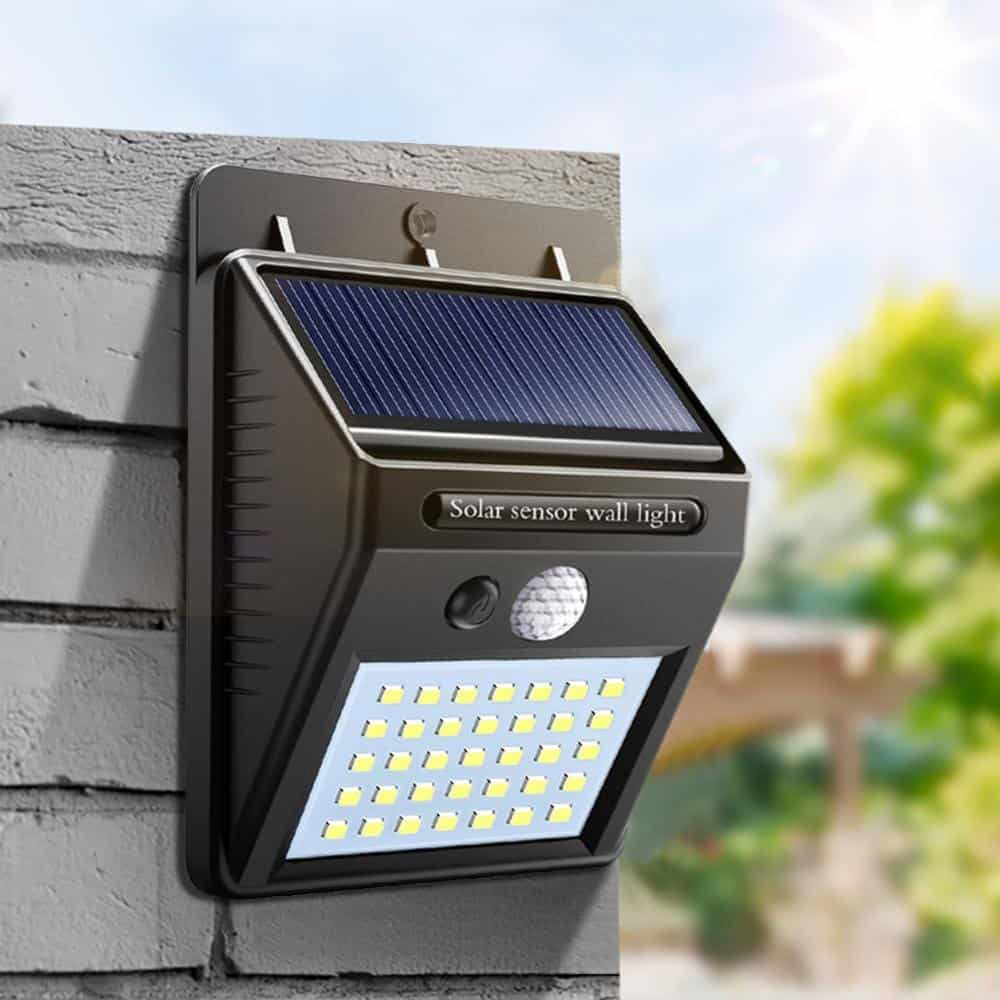Imagine entering a hallway that is just lighted or approaching your front door in the evening, only to have the lights come on as you get closer. Thanks to motion sensor lights, this science fiction scenario is now a reality. Motion sensor lights, which are intended to detect movement and respond with immediate illumination, are becoming a common sight in both residential and commercial settings.
This article will serve as your full introduction to motion sensor lights, revealing the technological mysteries behind them, discussing their many advantages, and offering insightful advice on how to pick, install, and utilize these smart lighting systems. Motion sensor lights are a great way to increase the security and safety of your home, conserve energy, or just enjoy the comfort of automatic lighting.
What is a motion sensor?
A motion sensor also known as a motion detector, is a electronic device that can detect motion or movement around it. It works by sensing changes in its field of view and reacting to these changes by triggering a response, such as turning on lights, sounding an alarm, or activating other connected devices.
Type of Motion Sensor
Motion sensors come in various types, each utilizing different technologies to detect motion accurately. The main types of motion sensors are:
- Passive Infrared (PIR) Motion Sensors:
- Microwave Motion Sensors:
- Dual-Technology Motion Sensors:
- Ultrasonic Motion Sensors:
- Tomographic Motion Sensors:
- Time-of-Flight (ToF) Motion Sensors:
Each type of motion sensor has its strengths and limitations, making them suitable for different applications. The choice of motion sensor depends on the specific requirements and environmental conditions of the intended application. In this blog post, we are discussing the mostly usable motion sensor PIR Sensor.
How Motion sensor work?
The main Component of Motion sensors is Pyroelectric Sensor. Motion sensor also known as PIR(Passive Infra-Red) sensor. They are called passive because they do not generate or radiate any energy for detection purposes. They work entirely by detecting the energy radiated by the object including humans and animals.

The basic principle of a working pir sensor is that any object whose inner temperature is above the absolute 0°C emits heat energy in the form of IR radiation. Of course, this IR radiation is not visible to the naked eye. In that case, these PIR sensors are designed to detect this IR radiation.
This PIR sensor is internally split into two halves. The main concept we have to understand here is this sensor is not measuring the presence of IR radiation, it is actually measuring the change in the level of IR radiation, and there it is split into two halves. And the level of IR radiation in each slot is compared and depending on the change in the level of IR radiation the output will be generated
The module also has a special cover named Frensal Lens which focuses the IR radiation onto the pyroelectric sensor.
Operation Mode of PIR Sensor
PIR Sensor has 2 operation modes one is Non Repeatable Trigger and another is Repeatable Trigger
Non Repeatable Trigger: when the sensor output is high and the delay time is over the output is automatically changed from high to low.
Repeatable Trigger: when it detects any object triggers the output is high all the time until the detected object is in sensor range.

Motion Sensor Light Bulb
A motion sensor light bulb is a smart and energy-efficient lighting solution that integrates a motion sensor directly into the light bulb. Instead of using a separate motion sensor device, these bulbs have the sensor built-in, allowing them to detect motion and respond by automatically turning the light on or off.
Here’s how a motion sensor light bulb works
Motion Detection: The built-in motion sensor within the light bulb is designed to detect movement within its field of view. It can sense changes in heat or movement, depending on the type of sensor used.
Response to Motion: When the motion sensor detects movement, it triggers the light bulb to turn on automatically. This feature is particularly useful in areas where hands-free illumination is required, such as hallways, staircases, closets, and outdoor spaces like driveways and pathways.
Time Delay: Most motion sensor light bulbs come with an adjustable time delay setting, allowing users to customize how long the light stays on after detecting motion. The delay time can typically be set to a few seconds or minutes, depending on user preferences and specific lighting needs.
Daylight Sensing: Some motion sensor light bulbs are equipped with LDR light sensors. These sensors allow the bulb to determine whether there is enough natural light in the environment. If sufficient light is detected, the bulb may refrain from turning on even if motion is detected, conserving energy during daylight hours.
Energy Efficiency: Motion sensor light bulbs are highly energy-efficient because they only activate when motion is detected, reducing unnecessary usage and energy consumption. They are an excellent choice for areas where lights may be accidentally left on for extended periods.
Installation: Installing motion sensor light bulbs is as simple as replacing a standard light bulb. These bulbs are available in various base types, such as E26 or E27, making them compatible with standard light fixtures and lamp.
Outdoor Motion Sensor Light

Outdoor motion sensor lights are a wonderful lighting solution that boosts the convenience and safety of outdoor environments by fusing cutting-edge technology with practicality. These clever lights are intended to detect motion automatically and react by illuminating the immediate area. They consequently offer hands-free lighting, boost security, and promote energy conservation.
Enhancing security is one of the main advantages of outdoor motion sensor light. These lights scare away prospective intruders and serve as a deterrent to trespassers and unwelcome visitors by turning on when motion is detected. They are particularly effective in enhancing safety and deterring criminal activities in dimly lit regions and close to entrances.
Additionally, outdoor motion detection lights use very little electricity. Motion detection sensor lights only turn on when necessary, as opposed to conventional outdoor lights that stay on all night. They become an environmentally friendly lighting solution and result in long-term cost savings because of their adaptive response to motion that saves energy and lowers electricity usage.
Additionally, by automatically lighting up exterior walkways, driveways, and stairs as people approach, these lights provide convenience and safety. This hands-free feature makes it simple to navigate in low light or bad weather, lowering the chance of slips, stumbles, and falls.
Users can alter the sensitivity, range, and activation time of outdoor motion detecting lights using a variety of settings. Due to their flexibility, lights can be customized to meet a variety of demands by responding properly to different ambient factors and user preferences.
Additionally, outdoor motion detecting lights are adaptable and have a variety of uses. They contribute to increased safety and security in diverse outdoor contexts because they are equally appropriate for residential homes, business buildings, and public spaces.
Many types are made to work with common outdoor electrical boxes, making installation usually simple. Easy installation is guaranteed by this user-friendly feature, making it simpler for companies and homeowners to integrate these intelligent lights into their outdoor lighting systems.
Motion Sensor Light indoor
Intelligent lighting technologies like indoor motion detecting lights have completely changed how we brighten our indoor environments. These cutting-edge gadgets are made to recognize movement in their immediate environment and react by turning on the lights. Unlike conventional indoor lights, which must be operated manually, motion sensor lights provide hands-free ease, increasing productivity and enhancing the indoor environment as a whole.
Passive infrared (PIR), one of the most popular technologies, forms the basis of the operation of indoor motion sensor lights. PIR sensors pick up on variations in the infrared radiation that warm objects, like people or animals, release. The sensor detects motion when a warm item moves into the sensor’s area of view and changes the infrared pattern.
Indoor motion sensor lights have several benefits for both homes and businesses. First of all, they aid in energy conservation by ensuring that lights are only turned on when necessary. Motion sensor lights automatically turn off when no motion is detected, saving energy and lowering electricity costs compared to conventional lights that could be unintentionally left on.
Indoor motion sensor lights also improve convenience and safety. Motion sensor lights remove the need to fumble in the dark for light switches in places where lighting is commonly required during visits at night, such as corridors, staircases, and toilets. They immediately illuminate the area when someone enters it, enhancing safety and averting mishaps.
interior motion sensor lights also enhance the general atmosphere and usefulness of interior places. They can be utilized in living rooms, kitchens, and bedrooms, giving residents the freedom to roam about without worrying about turning on or off lights.
Additionally, installing and integrating motion sensor lights into existing indoor lighting systems is not too difficult. For anyone wishing to enhance their indoor lighting, they are a practical and affordable option because many versions are compatible with regular light fittings.
Solar Motion Sensor Light
A solar motion sensor light is a smart and eco-friendly lighting solution that combines the benefits of solar power and motion detection technology. Unlike traditional lights that rely on electricity from the grid, solar motion sensor lights harness energy from the sun through photovoltaic (PV) panels mounted on the light’s housing. These PV panels convert sunlight into electricity, which is stored in rechargeable batteries within the light fixture.
The integration of a motion sensor further enhances the efficiency of these solar lights. When the motion sensor detects movement within its range, it triggers the light to turn on automatically. This feature ensures that the light only activates when it is needed, conserving energy and maximizing the light’s operating time.
Solar motion sensor lights are highly versatile and can be installed in various outdoor locations, such as gardens, pathways, driveways, patios, and around the perimeter of buildings. They are particularly useful in areas where access to electricity is limited or costly, making them a practical and cost-effective lighting solution for remote or off-grid locations.
Main Key Advantages of Solar Motion Sensor Light

Energy Efficiency: Solar motion sensor lights harness energy from the sun, converting sunlight into electricity through photovoltaic panels. This renewable energy source eliminates the need for electricity from the grid, reducing energy consumption and promoting sustainable practices.
Environmentally Friendly: By relying on solar power, these lights significantly reduce greenhouse gas emissions and carbon footprint. They contribute to a cleaner environment and help combat climate change by using a clean and renewable energy source.
Cost Savings: Solar motion sensor lights operate without drawing electricity from the grid, resulting in substantial cost savings on energy bills. Once installed, they incur minimal ongoing expenses, making them a cost-effective long-term lighting solution.
Easy Installation: Solar motion sensor lights are generally self-contained units, requiring no complex wiring or electrical connections. This ease of installation makes them a convenient and hassle-free choice for homeowners and businesses.
Low Maintenance: Solar motion sensor lights are designed to be durable and weather-resistant, requiring minimal maintenance over their lifespan. Regular cleaning of the solar panels to ensure optimal sunlight absorption is typically the only maintenance required.
Hands-Free Operation: The integration of motion sensors allows these lights to turn on automatically when motion is detected and turn off when no activity is present. This hands-free operation ensures efficient and effective lighting only when needed, further conserving energy.
Enhanced Security: Solar motion sensor lights provide an added layer of security to homes, businesses, and outdoor spaces. The sudden activation of lights, when motion is detected, can startle potential intruders and deter unwanted visitors, enhancing overall security.
Versatility: Solar motion sensor lights come in various styles and designs, suitable for a wide range of outdoor applications. They can be used in gardens, pathways, driveways, patios, and around buildings, providing reliable and convenient lighting in different settings.
Off-Grid Capability: Solar motion sensor lights are an ideal lighting solution for remote or off-grid locations where access to electricity is limited or not available. They offer an independent and self-sustaining lighting option for such areas.
Smart and Automated Lighting: The combination of solar power and motion detection technology creates a smart lighting system that automatically adjusts based on environmental conditions. This automation ensures efficient and optimized lighting without the need for manual operation.



I am not sure where you’re getting your info, but great topic.
Thanks for breaking it down so clearly!